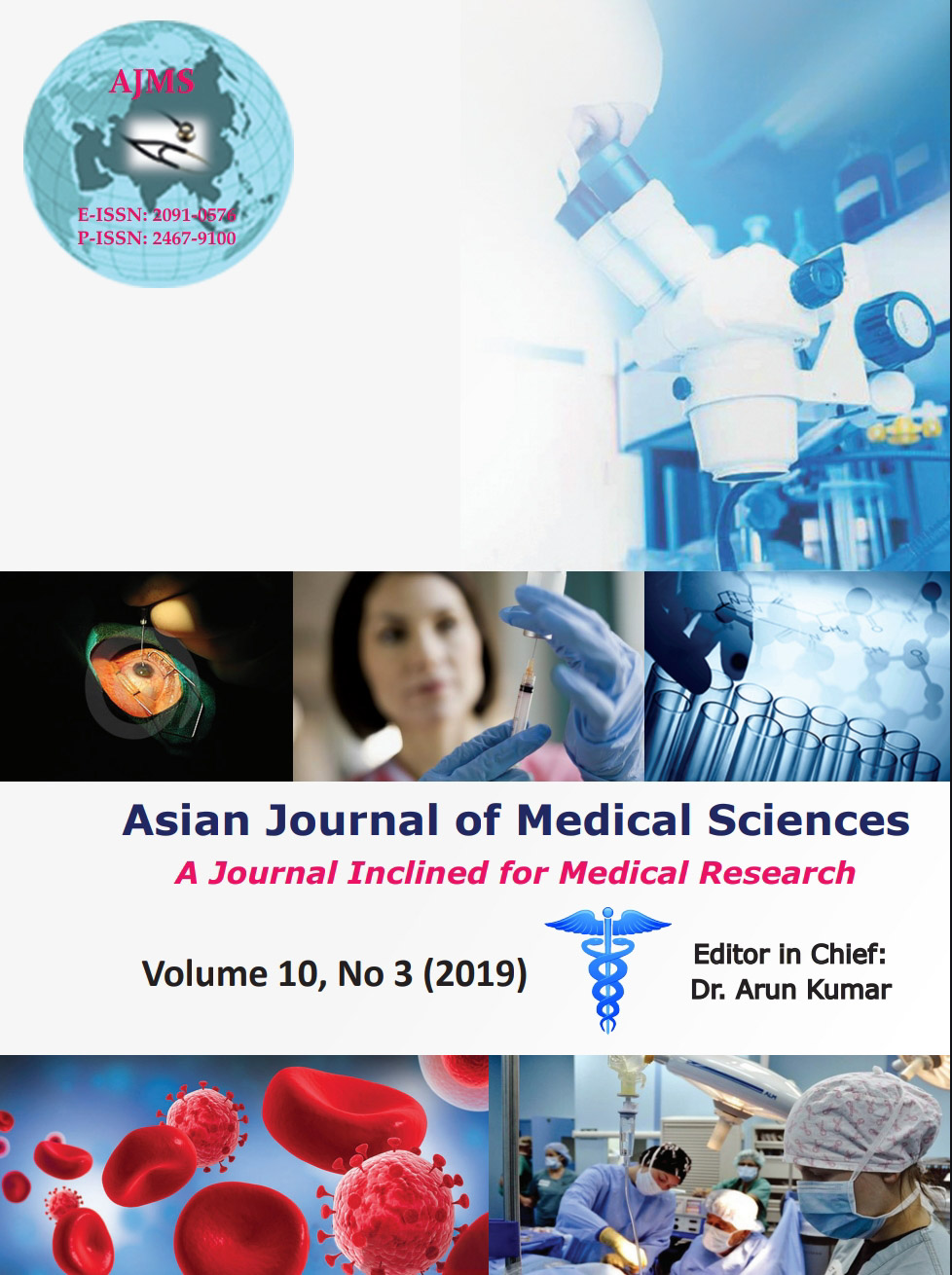Serum Reproductive hormone levels in male symptomatic HIV/AIDS patients on Antiretroviral therapy negative to Malaria parasite in Nnewi, Anambra State, Nigeria
Keywords:
HIV, AIDS, Malaria negative, Male subjects, Reproductive hormones, ARTAbstract
Background: AIDS is an endemic disease that causes death among young adults worldwide especially in Nigeria.
Aims and Objectives: This study investigated the serum reproductive hormone levels in symptomatic HIV/AIDS male subjects on ART who are negative to malaria parasite in Nnewi, Anambra State, Nigeria.
Materials and Methods: A total of 274 adult male participants aged between 18 and 60 years were randomly recruited, and grouped into: symptomatic HIV (stage 11) infected male participants on ART (A: n=69), Symptomatic HIV subjects not on ART (B: n= 69), Asymptomatic HIV positive subjects (C: n= 68) and HIV seronegative subjects (D: n= 68). Serum was used to assay for PSA, LH, FSH, Estrogen, Testosterone, Progesterone and Prolactin levels. Analysis of variance and student t-test were used for data analyses.
Results: The serum levels of PSA, FSH, Estrogen, Testosterone, Progesterone and Prolactin were significantly different amongst the groups at p<0.05 respectively. There were significantly higher levels of PSA, Estrogen, Progesterone but lower levels of Testosterone and Prolactin in subjects on ART compared with control at p<0.05 respectively. There were significantly higher levels of PSA, FSH, Estrogen,Progesterone but lower levels of Testosterone in subjects not on ART compared with control at p<0.05 respectively.
Conclusion: The reduction on serum levels of Testosterone and higher levels in FSH, PSA, Estrogen, and Progesterone may reveal presence of hypogonadism, primary testicular failure, prostate abnormalities such as cancer and hyperprogesteronaemia, in symptomatic HIV positives.
Downloads
Downloads
Published
How to Cite
Issue
Section
License
Authors who publish with this journal agree to the following terms:
- The journal holds copyright and publishes the work under a Creative Commons CC-BY-NC license that permits use, distribution and reprduction in any medium, provided the original work is properly cited and is not used for commercial purposes. The journal should be recognised as the original publisher of this work.
- Authors are able to enter into separate, additional contractual arrangements for the non-exclusive distribution of the journal's published version of the work (e.g., post it to an institutional repository or publish it in a book), with an acknowledgement of its initial publication in this journal.
- Authors are permitted and encouraged to post their work online (e.g., in institutional repositories or on their website) prior to and during the submission process, as it can lead to productive exchanges, as well as earlier and greater citation of published work (See The Effect of Open Access).




